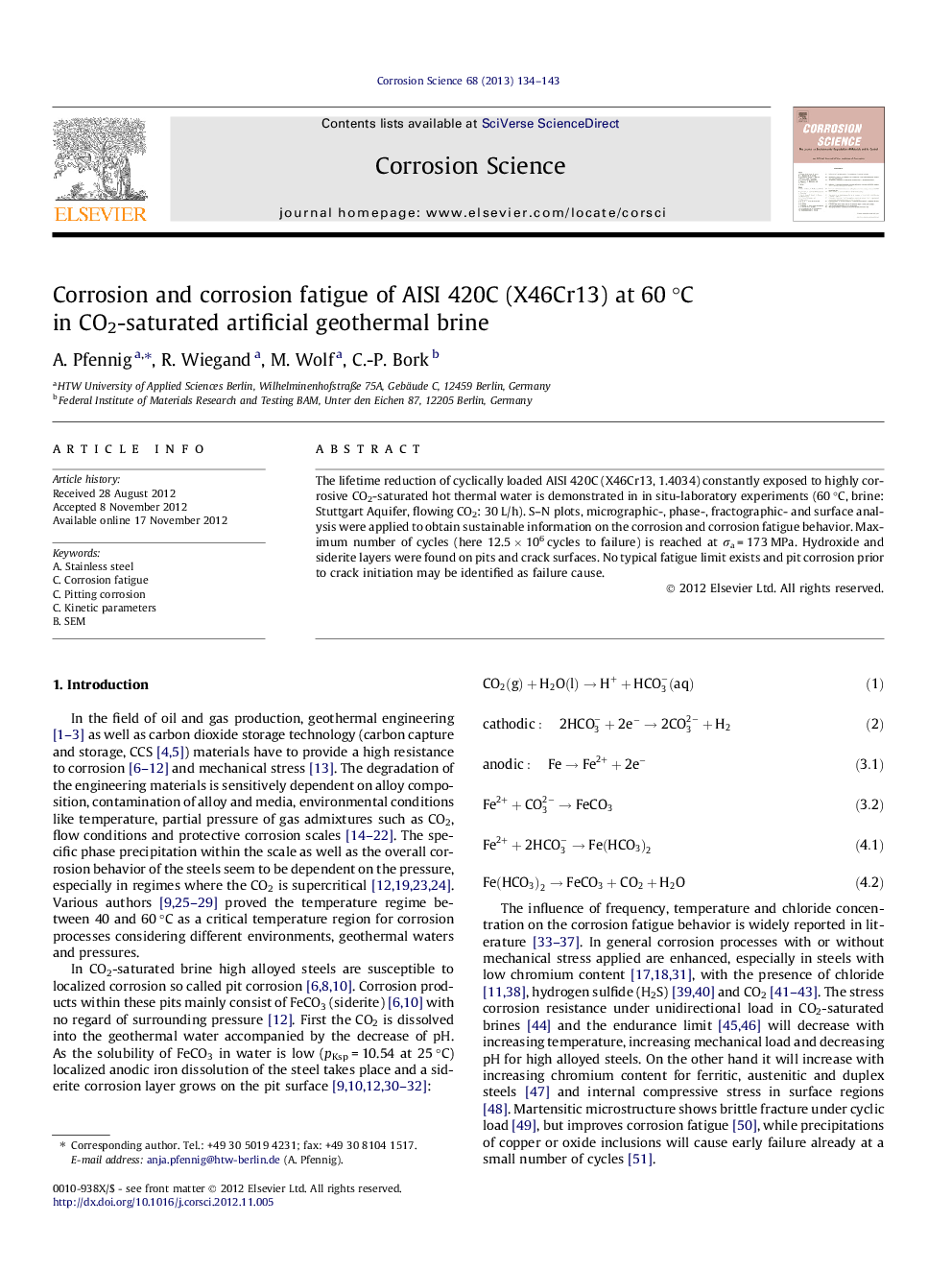| Article ID | Journal | Published Year | Pages | File Type |
|---|---|---|---|---|
| 1469297 | Corrosion Science | 2013 | 10 Pages |
The lifetime reduction of cyclically loaded AISI 420C (X46Cr13, 1.4034) constantly exposed to highly corrosive CO2-saturated hot thermal water is demonstrated in in situ-laboratory experiments (60 °C, brine: Stuttgart Aquifer, flowing CO2: 30 L/h). S–N plots, micrographic-, phase-, fractographic- and surface analysis were applied to obtain sustainable information on the corrosion and corrosion fatigue behavior. Maximum number of cycles (here 12.5 × 106 cycles to failure) is reached at σa = 173 MPa. Hydroxide and siderite layers were found on pits and crack surfaces. No typical fatigue limit exists and pit corrosion prior to crack initiation may be identified as failure cause.
► All-purpose corrosion chamber: ⩽100 °C, 1 bar, flowing liquid media, gas mixtures. ► Corrosion and corrosion fatigue: AISI 420C (S–N curve, kinetic analysis at 60 °C). ► Endurance limit is reduced by nearly 40% due to corrosive environment. ► No dependence of local corrosion phenomena (pitting) on stress amplitude.
